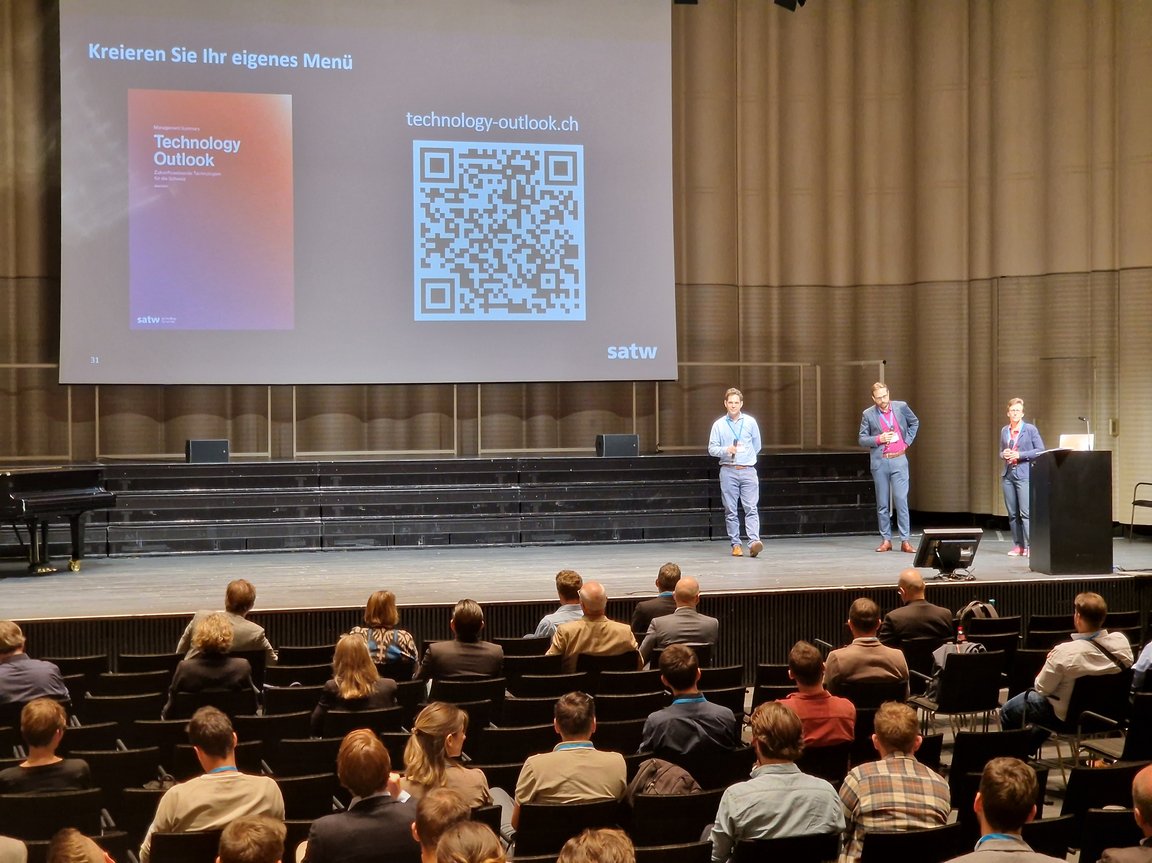Translated with DeepL
Two questions put to the panel painted a clear picture: Who is already actively involved in technology scouting? Five people raised their hands. Who has a digital strategy in the company? Only one person raised their hand. This made it clear to everyone what needed to be done. The workshop dealt with an acute topic: recognising technological trends and turning them into innovations.
The three input presentations by Johannes Schumm (Sensirion), Claudia Schärer (SATW) and Philip Hauri (Next Industries / Swissmem) summarised the following key messages:
- Scouting technologies needs a product strategy. Steps that are too big can become a problem. It makes more sense to have a clear strategy, move forward in small steps and play to your strengths. Because these become a competitive advantage.
- Scouting technologies requires a digital strategy. The problem is that digitalisation is very broad. And that makes it "a wave that overwhelms". But there is reason for hope: the goal is to learn to ride the wave.
- It is important to distinguish between digital technologies and digital trends. Examples of digital technologies include low code, blockchain, virtual reality / augmented reality, robot process automation and Web3, while examples of digital trends include digital twins, industrial metaverse and data spaces. There are also many cross-cutting technologies, which means that they are widely used.
- Raising awareness of opportunities, risks and fears. To avoid rushing into anything and making impulsive decisions, it is important to be aware of the opportunities, risks and fears. Typical opportunities of digitalisation are efficiency gains and increased competition; typical dangers, on the other hand, are fragmentation and the tried-and-tested silos that need to be abandoned. Familiar fears include missing out on trends or not adequately utilising the existing potential.
- Digitalisation must be part of the corporate strategy. Digitalisation and digital technologies are merely a means to an end. And as digitalisation can quickly become expensive, it is essential that it pays into the corporate strategy in the long term.
- The development of a digital strategy requires a clear focus. Four fields of action are distinguished for a digital strategy: 1. digitalisation, production and processes; 2. digital customer experience; 3. digital products, services and business models; 4. development of digital enablers. It should be noted that a small number of strategic thrusts are selected in order to have a clear focus and prioritisation. The strategy must be supported throughout the company; the strategic directions determine the development of applications, services and business models in which digital technologies are ultimately used.
- Recognising the potential of digital technologies and trends. To this end, it is important to build up knowledge through further training, trade fairs, events and self-study, and to learn from the experiences of others and best practices. But also to experiment, build prototypes, create resources and time for this and utilise networks such as Next Industries.
- From technology scouting to innovation thanks to inspiration and personal choice. There is no single preference or ideal recipe for a company. Companies should put together their own "menu". To do this, they need a menu, so to speak. One such menu is the SATW Technology Outlook. The quadrant presentation contains a selection of future technologies with great potential, which can be filtered according to various criteria. The texts in the study include technologies and showcases that serve as inspiration on topics such as increasing efficiency or sustainability in production, as well as best practices in the field of artificial intelligence. The Technology Outlook covers forward-looking technology trends, compares developments in Germany and abroad and also explains the individual technology trends.
